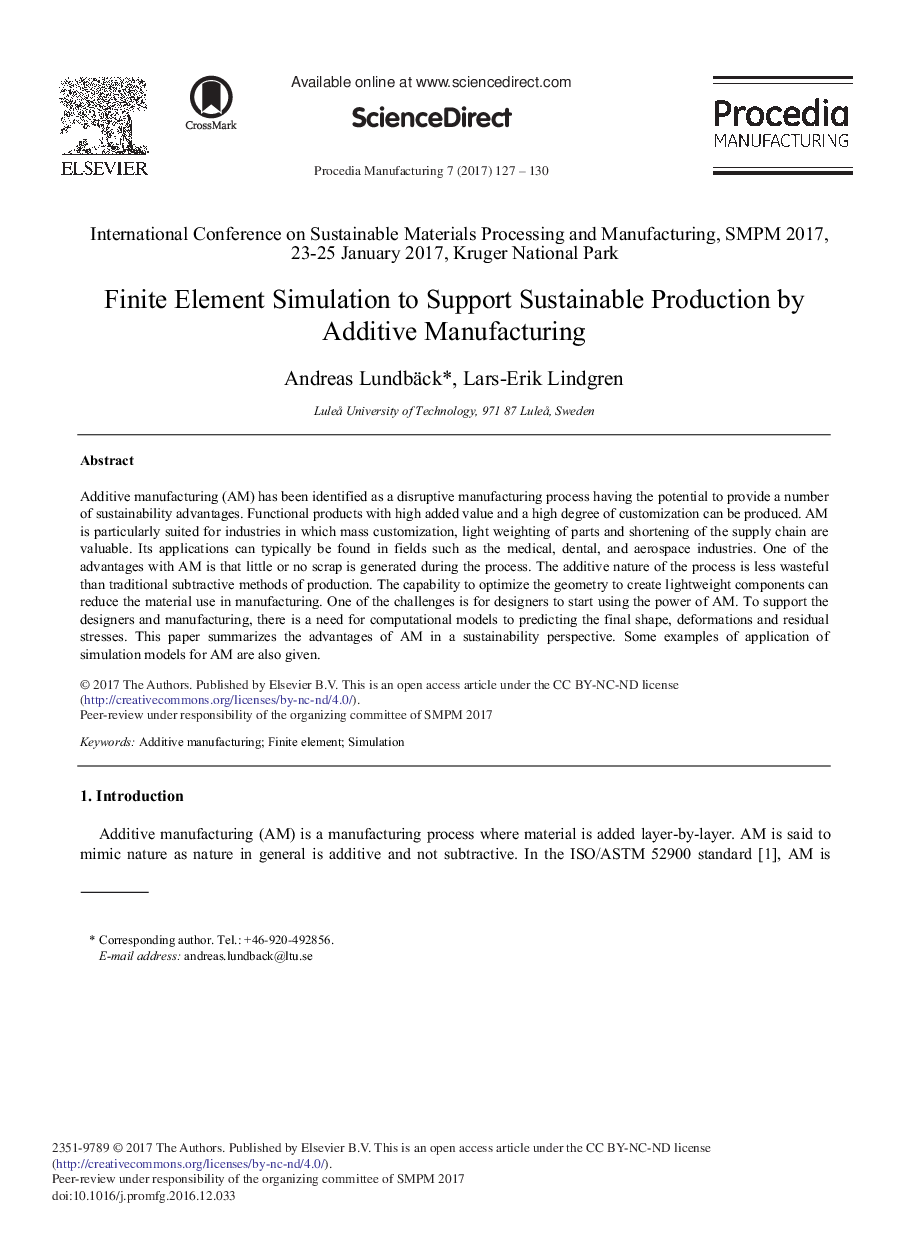| Article ID | Journal | Published Year | Pages | File Type |
|---|---|---|---|---|
| 5129148 | Procedia Manufacturing | 2017 | 4 Pages |
Additive manufacturing (AM) has been identified as a disruptive manufacturing process having the potential to provide a number of sustainability advantages. Functional products with high added value and a high degree of customization can be produced. AM is particularly suited for industries in which mass customization, light weighting of parts and shortening of the supply chain are valuable. Its applications can typically be found in fields such as the medical, dental, and aerospace industries. One of the advantages with AM is that little or no scrap is generated during the process. The additive nature of the process is less wasteful than traditional subtractive methods of production. The capability to optimize the geometry to create lightweight components can reduce the material use in manufacturing. One of the challenges is for designers to start using the power of AM. To support the designers and manufacturing, there is a need for computational models to predicting the final shape, deformations and residual stresses. This paper summarizes the advantages of AM in a sustainability perspective. Some examples of application of simulation models for AM are also given.
